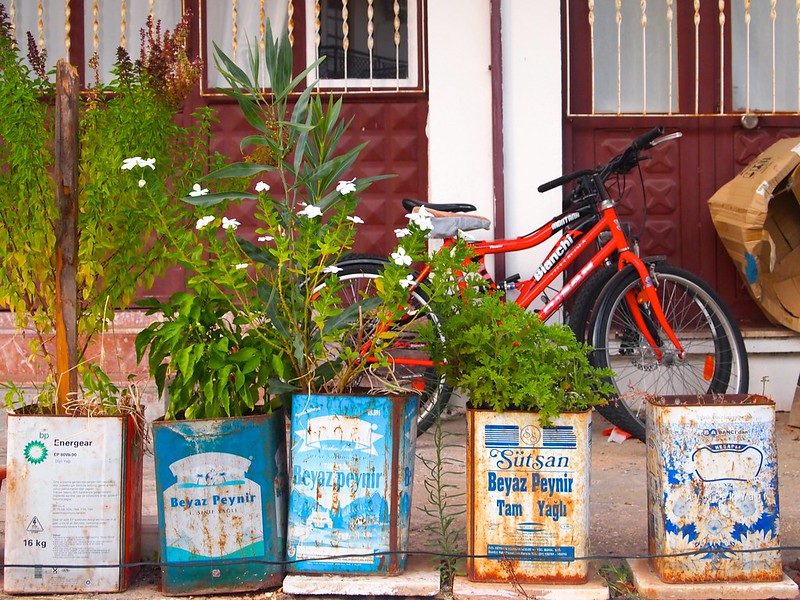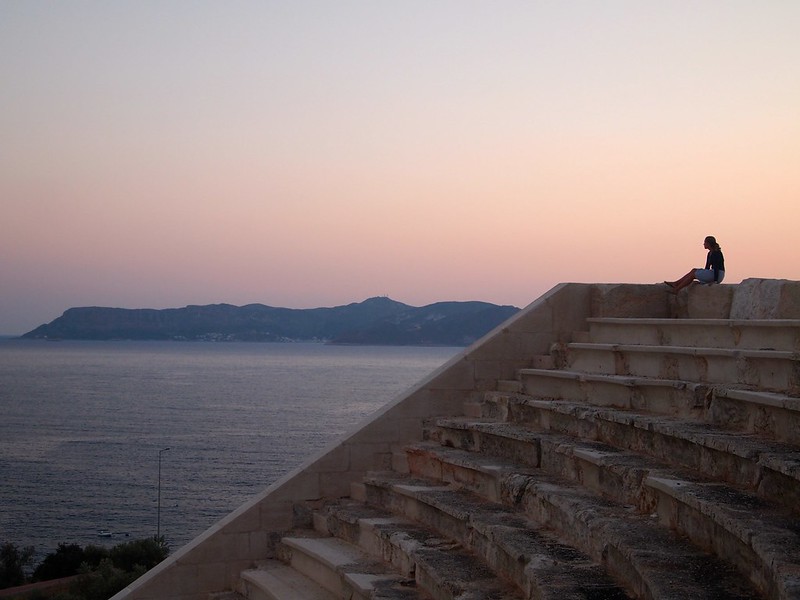Along the Turkish Riviera
Turkey’s Mediterranean coast was not our first beach stop of the trip. We previously spent some lazy days on the sandy beaches in Cambodia and Thailand. But this was different.
For one thing, these aren’t the white sandy beaches we know from Southeast Asia or our Florida childhood. They’re rocky, covered in olive and fig trees, right downhill of ancient ruins, and the water is so, so blue.
A lot of people rent a boat to take them around the coast. Our budget didn’t stretch to that, so we chose a few places to stop and explore on Turkey’s southern coast.
The first was Patara, famous for its long beach and as the birthplace of St. Nicholas (yes, he of the “bowl full of jelly”). Truthfully, the only saving grace of Patara were our comfy digs at the family-owned Rose Pension. Perhaps Patara would be better at another time of year. In late August it was sweltering, too hot to hike the nearby Lycian Way or even spend much time at the beach (which was only accessible from town by an unshaded 2-3 km walk through the local ruins). Worse, there is no good, local, authentic place to eat. We tried several places and they were all abysmal.
We should have moved on more quickly to Kas (it’s spelled with the Turkish squiggly S, so it’s pronounced roughly “cash”), our second stop. Albeit touristy, this beautiful little town is a picture perfect Mediterranean city. White-washed buildings draped in bougainvillea, dramatic cliffs ending in azure waters. We took an excellent day trip by boat out to the ruins of an ancient “sunken city” that crumbled into the ocean after an earthquake long ago, stopping to swim in coves along the way. We found the best beach at a camping ground near the ancient theater just west of town. They provide deck lounges, sun shades, and a dive into deep water right at your feet.
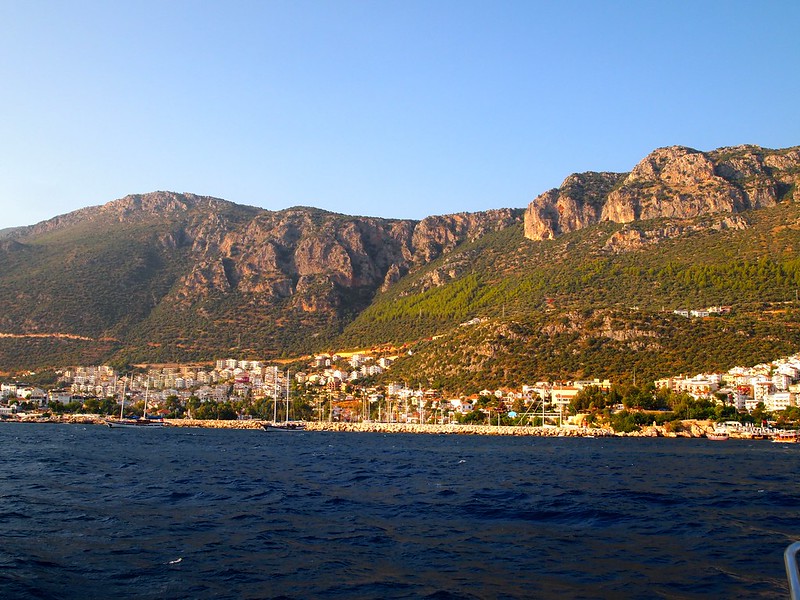
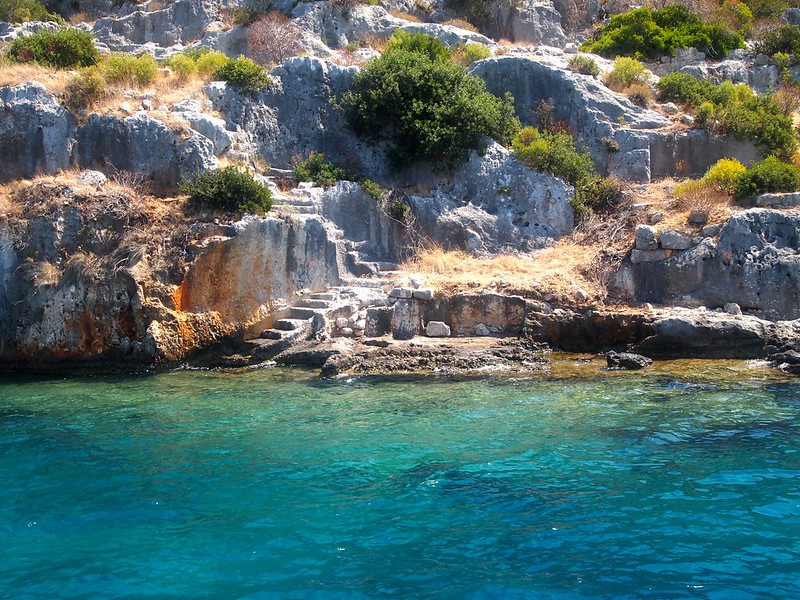
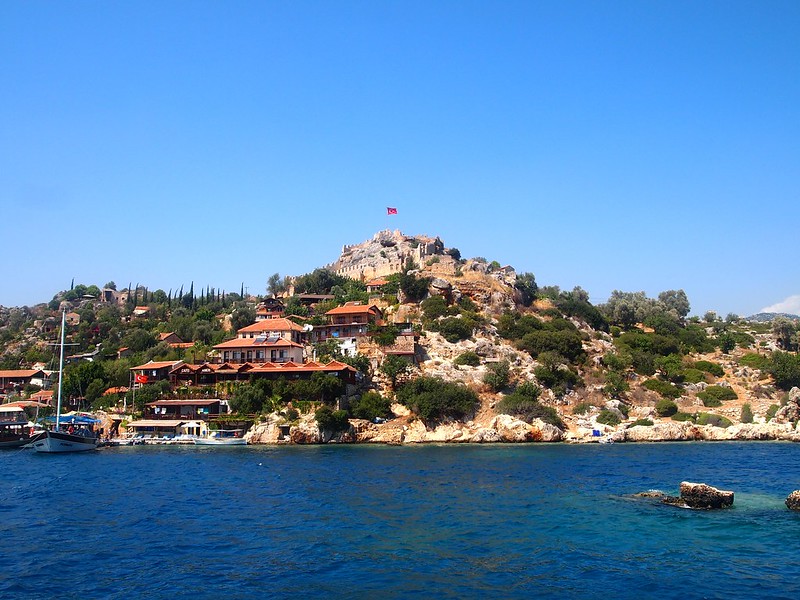
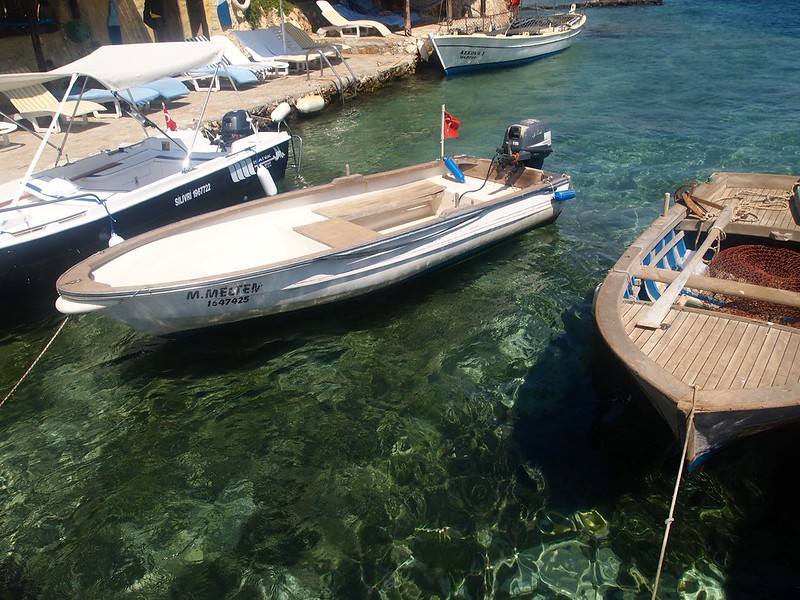
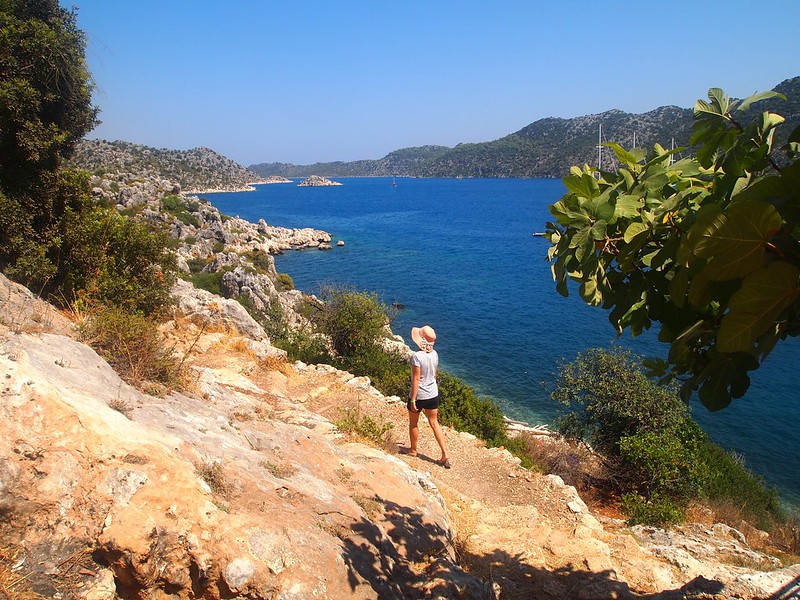
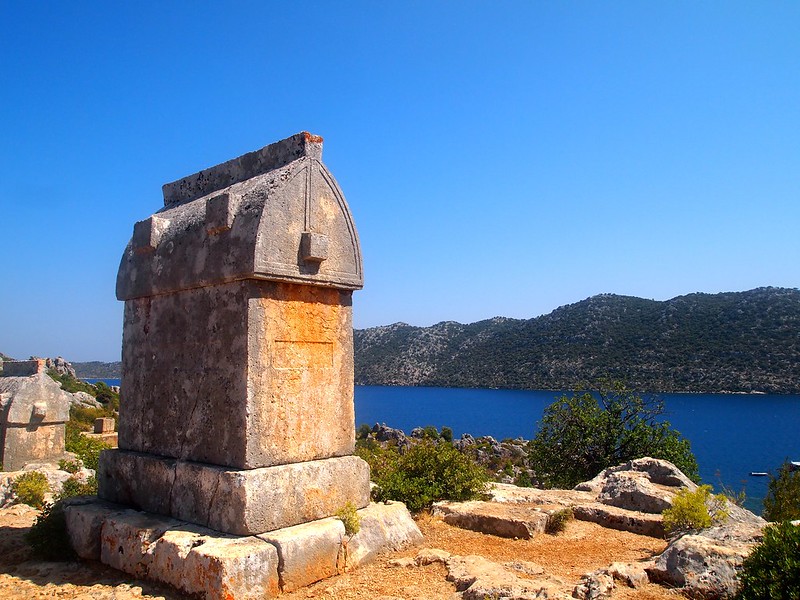
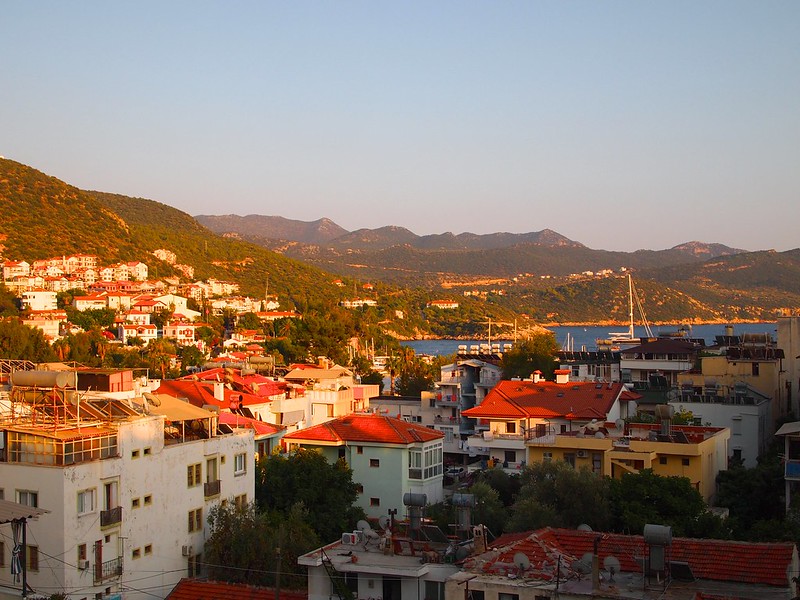
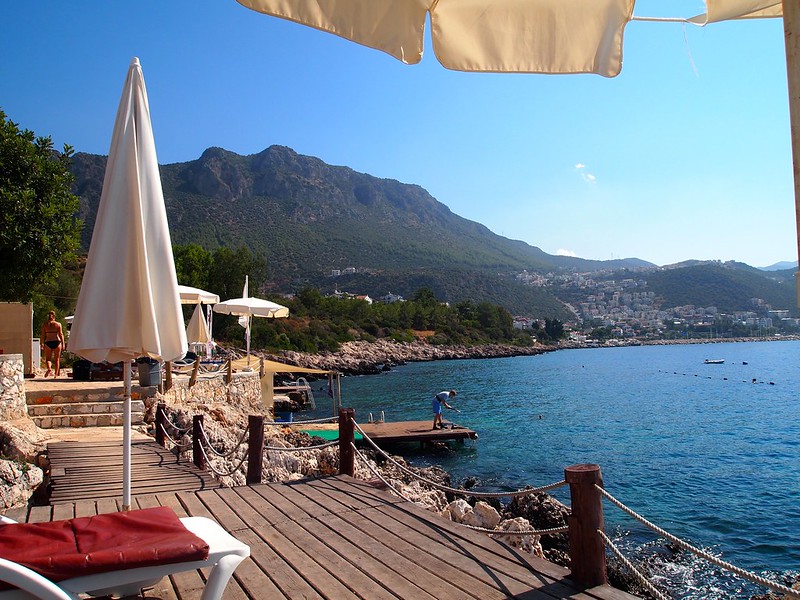
Our final stop, just for one night to break up several long bus rides, was Antalya. A big place, its old city is a little too chock-a-block full of touristy shops, bars, and clubs for our liking. Not our scene, but we do think Antalya is the perfect place to visit a Turkish hamam, or bath house. We went to the 700-year-old Balık Pazarı Hamamı (literally translated “Fish Market Bath House”) for a good scrub down.

What to expect at a Turkish hamam
- Men and women bathe separately.
- First, you’ll be shown into a little changing room, where (for women) you take off everything but your underwear / bathing suit bottoms (the men get starkers) and wrap yourself in a pestemal, or small towel.
- For me, a sweet lady next led me into a very clean, very steamy white marble room, whipped off my towel and showed me how to sit, relax and pour the warm water over myself. Jordan said his attendant “pushed me into a dark, hot room and closed the door.”
- After sitting and sweating for a while, the attendant (from everything I’ve read, always a middle-aged and overweight person of your same gender) will lay you on a marble slab and scrub you down with a rough mitt. It felt like getting licked by a giant cat, in a good way.
- After the scrub, the attendant will splash water on you (all over you — including a no-nonsense pull-away-your-bottoms-and-douse-liberally move) and then lay you back down to be covered in bubbles and given a quick massage.
- My lady finished by shampooing my hair. One more rinse and you’re given a fluffy towel and led back to the changing room where you’ll be offered a complimentary glass of tea.
I loved the hamam experience. It isn’t awkward if you don’t make it — it’s very relaxing and I felt clean as a whistle afterward. Best of all, our hamam trip, at 35 TL per person, was a fraction of the cost of similar historic hamams in Istanbul (which charge about 90 TL per person). We hear the “real hamam” experience is getting pummeled, as Anthony Bourdain did, but luckily, we had a much gentler time of it.


